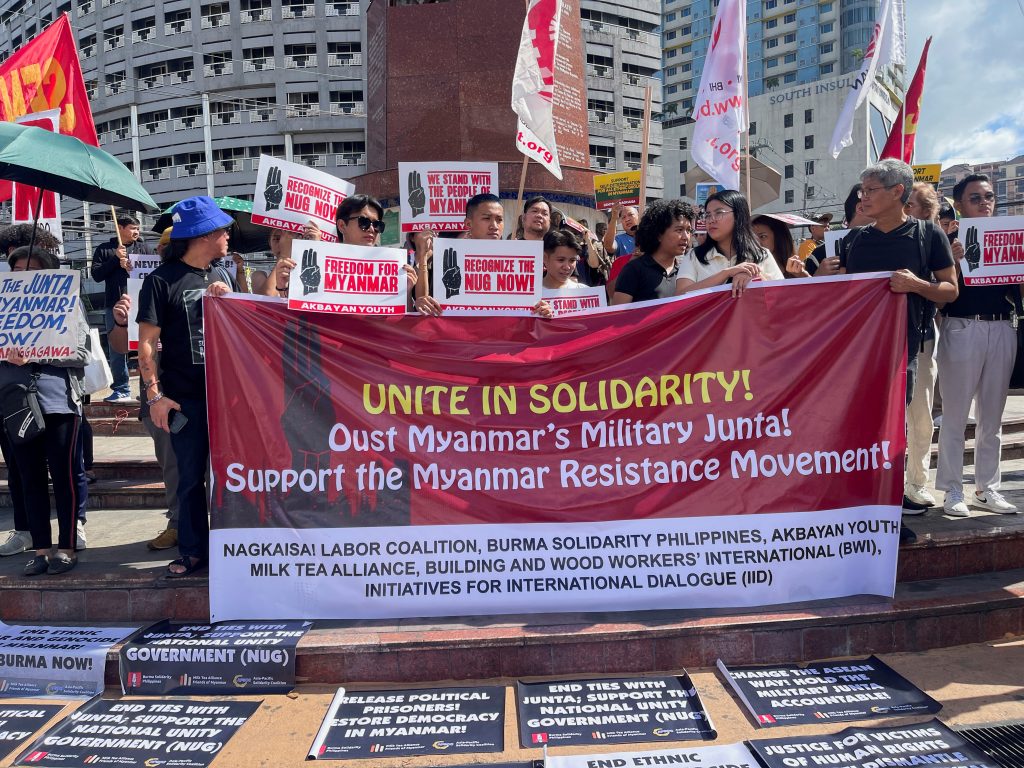There are no ‘silver linings’ in a conflict like that in Myanmar, where the civil war is still having its devastating effects on the country’s society and economy three years on from the military coup of February 2021.
But it was still encouraging that 2023 saw a watershed in the dynamics of the war, with unexpected unity among armed resistance groups leading to a series of notable defeats for forces of the State Administration Council (SAC) junta. These breakthroughs by the resistance have delivered a humiliation for the military that has damaged morale among its rank and file and potentially destabilised power balances among its elite factions.
As Nicholas Farrelly observes in this week’s lead article, ‘[w]ith the generals in Naypyidaw now feeling under more pressure than ever, with the battlespace changing rapidly, and with Myanmar even more isolated than usual internationally, questions about what happens next are starting to get more attention’.
One of these questions is what kind of political unity can be sustained among the anti-junta forces working under the National Unity Government (NUG), a government-in-exile of civilian politicians ousted in the coup, and the various ethnic armies that have been fighting the central state for decades.
‘If the military regime eventually fails — meaning that the coup-makers have their backs to the wall — the hard work of the Myanmar people will continue, including across what are often competing ethnic, religious and ideological lines’, says Farrelly.
On the eve of the third anniversary of the coup, the NUG released a joint statement with the major ethnic armed organisations that repudiated the circumscribed democracy enshrined in the military-authored 2008 constitution, calling instead for a truly democratic federal state in which the military holds no veto power and plays no political role.
Those displays of shared vision and commitment to profound political reforms notwithstanding, Farrelly cautions that ‘[t]he big problems in any “day after” scenarios’ if or when the conflict ceases ‘are about equitably sharing power and resources between the countless groups that have fought so hard to defeat the coup. They are understandably eager to carve out spheres of authority, experiment with self-government and secure a share of the country’s vast resource wealth.’
There is still much bloodshed to come between here and that point. Yet resistance forces would hope that a further deterioration in the junta’s military position might induce it towards the dialogue with the NUG and its allies that it has so far resisted. Failing that, there is the prospect of a brutal fight to extinguish, through military means, the junta’s ability to control territory and state institutions — the ‘fall of Naypyidaw’ scenario.
As Farrelly writes, ‘it is hard to imagine a negotiated settlement that could include the current military leadership. If Naypyidaw is attacked and risks being overrun, their last option would be sanctuary in ignominious exile’.
The Tatmadaw’s modus operandi has been marked by deliberate attacks on civilian targets in order to terrorise communities into submission. If the SAC falls, questions of accountability and impunity for atrocities will loom large in a post-conflict landscape in which officers — whatever the institutional coherence of the post-conflict military — could still remain powerful political players. In whatever case, there will be hard political compromises to be made towards the overriding priority of preventing a power vacuum and Myanmar’s descent into warlordism and the perpetuation of its failed-state status.
Assuming a successor government to the SAC has a basic institutional coherence, it and the international community will have enormous work ahead to get Myanmar back on track. The conflict has not just economically immiserised a population that was hit hard by the COVID-19 pandemic. It has torn at the social fabric, as the surveillance, informing, arbitrary detention and torture that were synonymous with the State Law and Order Restoration Council era have returned to areas under SAC control, with all the weakening of social trust and cohesion that that entails.
Myanmar’s civil conflict is no longer the intractable stalemate that it appeared to be just a year ago. ASEAN must maximise every opportunity it has to convince the junta that it has an interest in engaging with the ‘five-point consensus’ that it signed on to in 2021. ASEAN is the obvious candidate to act as an international mediator between the resistance and the junta, a role which Western stakeholders would support its taking.
China’s role in a negotiated solution is less clear. As Enze Han has observed China is hedging its bets in Myanmar, maintaining close ties to the SAC while apparently giving tacit support to some of the resistance groups on Myanmar’s periphery. China has been wary of the NUG because it sees it as too close to the West, but the extent to which it would provide political and diplomatic cover for the SAC, if the writing is on the wall for the junta, remains to be seen.
With the West’s preoccupation in Ukraine and the Middle East, Myanmar has receded among its diplomatic priorities. But ASEAN’s future remains deeply entwined with the resolution of the tragic conflict there and rides on avoiding its cancerous effects on the region’s standing and success. ASEAN readiness for an initiative on Myanmar is a diplomatic imperative.
The EAF Editorial Board is located in the Crawford School of Public Policy, College of Asia and the Pacific, The Australian National University.

